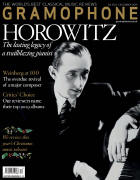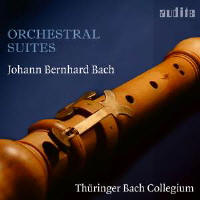Texte paru dans: / Appeared in:
|
|||||||
|
Outil de traduction (Très approximatif) |
|||||||
|
Reviewer: Lindsay Kemp Rinaldo Alessandrini’s new recording of Bach’s Orchestral Suites may well be the danciest ever. Thirteen years after his joyful account of the Brandenburg Concertos (11/05) blasted its way to a Gramophone Award, he has turned to these four noble creations and infused them with a choreographic shape and swing that ought to make it hard for listeners to keep still. His long booklet note is full of the evidence of much consideration of the natures of all the different dance types Bach embraced across these 24 movements, but yeah, plenty of people have done that and made claims for the end result before. What makes the difference here is that Alessandrini has not come up with a blanket, one-style-suits-all tempo or manner for each dance, but treated each one on its own merits. Compare, for instance, the three Menuets: Suite No 1’s has a buoyantly motoring one-in-a-bar; No 2’s bustles and twitters; and No 4’s twirls frilly cuffs at us. Elsewhere Alessandrini shows that he has no auto-pilot for these pieces, only lively ideas in plenty. Normally racing dances such as the Réjouissance and Badinerie are calmly measured, as are the Ouvertures, though never in the same way twice. The First Suite’s Courante flaunts a rather deliberate inégal while the Forlane stamps like a snorting horse. The Second Suite’s Rondeaux is surprisingly brisk, while its Sarabande refuses to allow itself to fixate on its treble-bass canon, concentrating instead on light and natural phrasing. The Third Suite’s famous Air is presented not as a melody with subservient accompaniment but as an intricate and lovingly drawn contrapuntal web. Any performance with as many ideas as this will invite dislikes (I have a bit of a problem with the intermittently clodhopping bass in the First Suite’s Passepied), but overall I’m sure the lasting impression for many will be of a joyous and refreshing encounter with familiar music, served with a meticulous and constantly imaginative attention to details of phrasing and articulation, a crispness of ensemble and a bright and bracing transparency of texture, that may not have been matched since Musica Antiqua Köln’s brilliant but less yieldingly human Archiv recordings in the 1980s. Alessandrini augments the four Bach Suites on this two-disc set with a suite each by two of his slightly older cousins, Johann Bernhard and Johann Ludwig, both of them more Telemann-like and closer in manner to the form’s French origins than their more famous counterparts. They are welcome in themselves, but also have the effect of emphasising just how contrapuntally rich Sebastian’s suites are.Ludwig’s Suite is the only one of his to survive, as it happens, but we are luckier with Bernhard, for there are four of his left to us, mainly thanks to the interest taken in them by Sebastian, who had three of them copied out to perform alongside his own at the Leipzig Collegium Musicum in the 1730s. All four appear in their own right on a disc from the Thüringer Bach Collegium, a newish group formed to explore just this kind of Bach hinterland and who, led by the violinist Gernot Süssmuth, engage fully with the music’s bright mix of movementtypes, including some – such as its Caprice, Fantaisie and a couple of French-style character-pieces – not used by Sebastian. Playing one-to-a-part, they find all the nimble energy needed for the likes of the Rigadons and Passepieds, as well as the soulful melody installed in the sweetly rapt Sarabandes and Airs, including one in the G major Suite that is in real ‘Air on the G string’ territory. The sound is intimate, transparent and not always ideally blended, but it is altogether more present and engaging than in the recording made a little while ago by L’Achéron (Ricercar, 2/17), whose larger forces sound squidgy and distant by comparison. The Thuringians also give us a bonus in ‘La Tempête’, the little encore – actually a short overture composed in 1691 by Steffani – which Sebastian added to the G major Suite for his Leipzig listeners’ entertainment. |
|||||||





